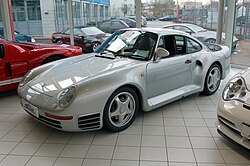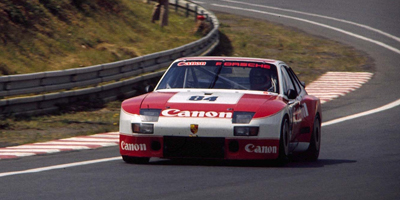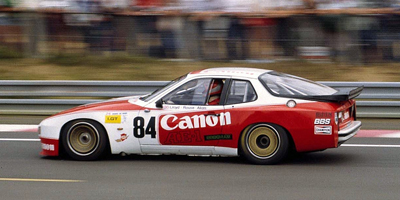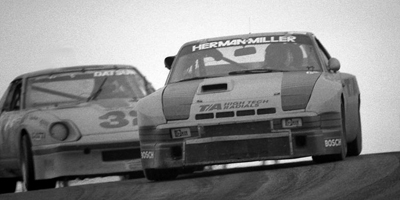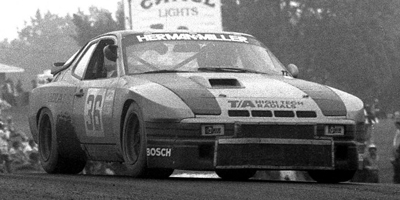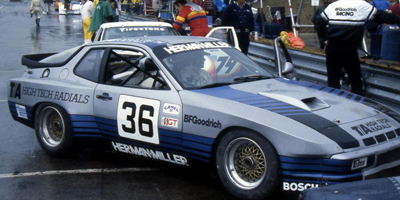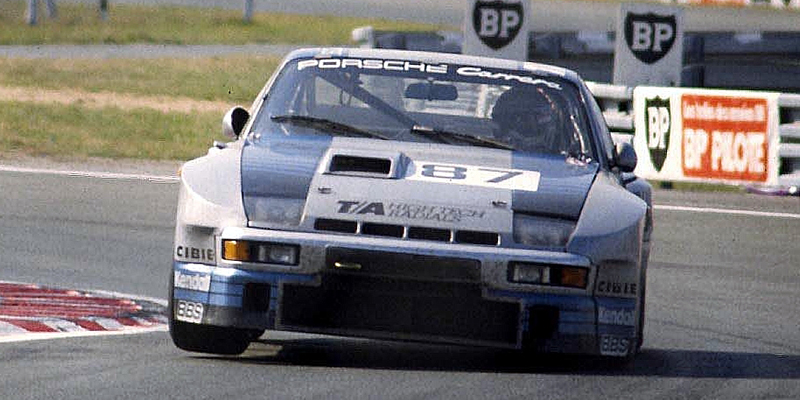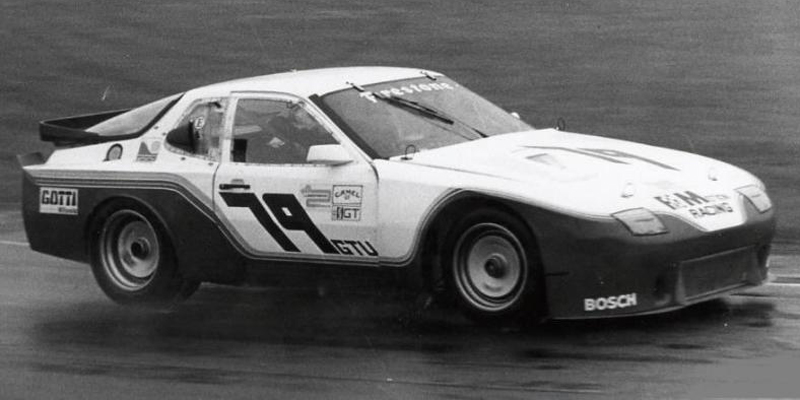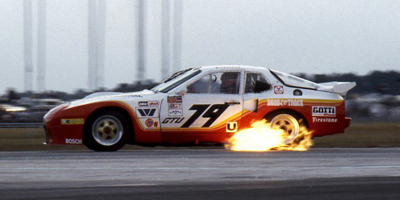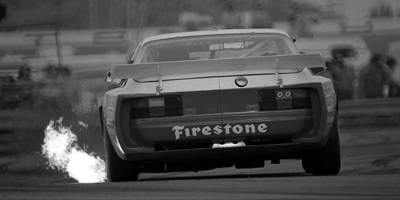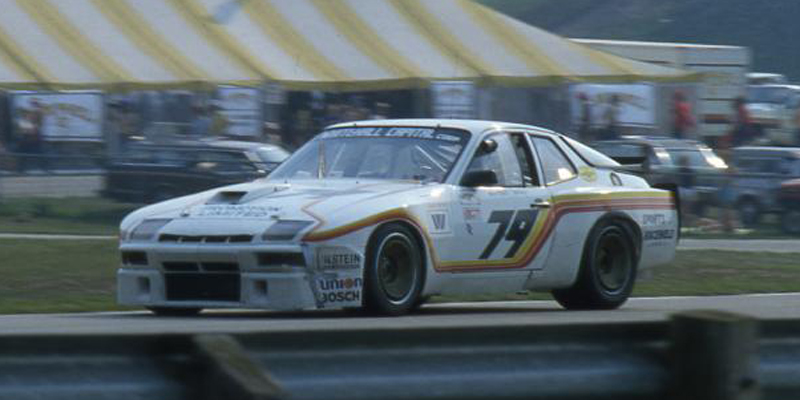The 928 featured a large, front-mounted and water-cooled V8 engine driving the rear wheels. Originally displacing 4.5 L and featuring a single overhead camshaft design, it produced 219 hp (163 kW/222 PS) for the North American market and 240 PS (176 kW/237 hp) in other markets. Porsche upgraded the engine from mechanical to electronic fuel injection in 1980 for US models, although power remained the same. This design marked a major change in direction for Porsche (started with the introduction of the 924 in 1976), whose cars had until then used only rear- or mid-mounted air-cooled flat engines with four or six cylinders.
Porsche utilized a transaxle in the 928 to help achieve 50/50 front/rear weight distribution, aiding the car's balance. Although it weighed more than the difficult-to-handle 911, its more neutral weight balance and higher power output gave it similar performance on the track. The 928 was regarded as the more relaxing car to drive at the time. It came with either a five-speed dog leg manual transmission, or a Mercedes-Benz-derived automatic transmission, originally with three speeds, with four speed from 1983 in North America and 1984 in other markets. More than half of production had the automatic transmission. Exact percentage of manual gearbox cars for entire production run is not known but its believed to be between 25 and 30%.
The body, styled by Wolfgang Möbius under guidance of Anatole Lapine, was mainly galvanised steel, but the doors, front fenders and hood were aluminium. It had a substantial luggage area accessed via a large hatchback. The new polyurethane elastic bumpers were integrated into the nose and tail and covered in body-coloured plastic; an unusual feature for the time that aided the car visually and reduced its drag. Porsche opted not to offer a convertible variant but some aftermarket modifiers offer convertible conversions.
The 928 qualified as a 2+2, having two small seats in the rear. Both rear seats could be folded down to enlarge the luggage area, and both the front and rear seats had sun visors for occupants. The 928 was also the first vehicle in which the instrument binnacle moved with the adjustable steering wheel.
The 928 included several other innovations such as the "Weissach Axle", an early all-wheel steering system that provides passive rear-wheel steering in certain off-throttle cornering situations, and an unsleeved, silicon alloy engine block made of aluminium, which reduced weight and provided a highly durable cylinder bore.
Porsche's design and development efforts paid off during the 1978 European Car of the Year competition where the 928 won ahead of the BMW 7-series and the Ford Granada. The 928 is the only sports car so far to have won this competition, where the usual winners are mainstream hatchbacks and sedans/saloons from major European manufacturers. This is regarded as proof of how advanced the 928 was compared to its contemporaries.





